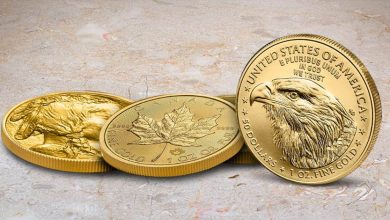InvestmentsStock Market
Investing in ETFs: Exploring Best ETFs for 2024

Investing in many different companies can be tricky. Imagine having to research lots of companies to decide where to put your money! That’s why there’s a clever way to invest called exchange-traded funds, or ETFs. These are like big baskets of stocks that you can buy and sell on stock exchanges, just like you would buy individual stocks.
ETFs are easy to understand and use. You buy them just like you would a stock, and they offer a straightforward way to invest in a variety of assets. Compared to some other investment options, ETFs are relatively cheap. This means you can start investing without needing a lot of money upfront.
Diversification is like spreading your eggs across different baskets to reduce risk. ETFs make it easy to diversify your investments not only across different types of assets (like stocks or bonds) but also across industries. This helps protect your investments from big swings in the market. For instance, if one industry does badly, your whole portfolio won’t suffer as much because you’ve invested in many different areas.
By investing in ETFs, you’re essentially spreading your investment across various industries, company sizes, and even geographic regions without the hassle of buying each individual stock or asset separately. This balanced approach can help shield your investments from the ups and downs of the market.
Investing in many different companies can be tricky. Imagine having to research lots of companies to decide where to put your money! That’s why there’s a clever way to invest called exchange-traded funds, or ETFs. These are like big baskets of stocks that you can buy and sell on stock exchanges, just like you would buy individual stocks.
Best ETFs for 2024
Here’s a list of the best ETFs for 2024. These are funds that focus on big American companies and have low fees (below 0.5%). We’ve sorted them by how well they’ve performed over the past five years. But remember, we’re not including ETFs that do fancy stuff like borrowing money to invest (leveraged), betting against the market (inverse), or protecting against currency changes (hedged).
When considering ETFs for investment, several popular options stand out, each offering unique benefits. Let’s take a closer look at some of these top choices:
- FTSE All-World ETF: The FTSE All-World ETF provides exposure to a broad range of global stocks, encompassing both developed and emerging markets. This ETF offers investors a convenient way to diversify their portfolio across various regions and industries. By investing in the FTSE All-World ETF, you gain access to thousands of companies worldwide, making it an attractive option for long-term investors seeking global market exposure.
- MSCI World ETF: The MSCI World ETF tracks the performance of large and mid-cap stocks across developed markets worldwide. This ETF offers exposure to companies in countries such as the United States, Japan, the United Kingdom, and others. Investing in the MSCI World ETF allows investors to participate in the growth potential of established economies while spreading risk across multiple geographic regions.
| Fund (ticker) | YTD performance | 5-year performance | Expense ratio |
|---|---|---|---|
| Vanguard FTSE Developed Markets ETF (VEA) | 5.4 percent | 7.4 percent | 0.05 percent |
| iShares Core MSCI EAFE ETF (IEFA) | 5.5 percent | 7.2 percent | 0.07 percent |
| Vanguard FTSE Emerging Markets ETF (VWO) | 1.7 percent | 2.8 percent | 0.08 percent |
| Vanguard Total International Stock ETF (VXUS) | 4.4 percent | 6.2 percent | 0.07 percent |
Advantages of ETFs
ETFs have become popular among investors for several reasons. Here’s why they’re a hit:
- Simplicity
ETFs are easy to understand and use. You buy them just like you would a stock, and they offer a straightforward way to invest in a variety of assets. - Affordability
Compared to some other investment options, ETFs are relatively cheap. This means you can start investing without needing a lot of money upfront. - Diversification
Diversification is like spreading your eggs across different baskets to reduce risk. ETFs make it easy to diversify your investments not only across different types of assets (like stocks or bonds) but also across industries. This helps protect your investments from big swings in the market. For instance, if one industry does badly, your whole portfolio won’t suffer as much because you’ve invested in many different areas. - Transparency
ETFs offer a high level of transparency, which means it’s easy for anyone with internet access to track the price changes of a specific ETF on the stock exchange. Moreover, the holdings of an ETF are revealed to the public every day, unlike mutual funds where this information is typically disclosed less frequently, usually monthly or quarterly. This transparency allows investors to closely monitor the assets they’re invested in. For example, if you prefer not to invest in oil-related companies, you can quickly identify if any such assets are added to your ETF. - Tax BenefitsETFs provide two significant tax advantages compared to mutual funds.
- Capital Gains Taxes: When you invest in a mutual fund, you might have to pay capital gains taxes as the fund manager buys and sells assets within the fund. This can happen frequently, especially in actively managed mutual funds. However, ETFs typically incur capital gains taxes only when you sell your investment. This means you’ll generally pay less tax on your ETF investments over time.
- Control Over Timing: In mutual funds, the fund manager decides when to buy or sell assets, which could lead to you being taxed for both short-term and long-term capital gains. With ETFs, you have more control. You get to choose when to sell your investment, making it easier to avoid higher short-term capital gains tax rates.
By investing in ETFs, you’re essentially spreading your investment across various industries, company sizes, and even geographic regions without the hassle of buying each individual stock or asset separately. This balanced approach can help shield your investments from the ups and downs of the market.
How Do ETFs Work?
ETFs, or exchange-traded funds, typically operate in two main ways:
- Passive Index Funds: Most ETFs are structured as passive index funds. This means they aim to match the performance of a specific market index or strategy. They achieve this by holding a portfolio of assets that closely mirrors the composition of the index they’re tracking. There are different methods for this replication, such as holding all the securities in the index (full replication) or holding a representative subset of securities (sampling).
- Actively Managed Funds: Although less common, some ETFs pursue active management strategies. In these funds, portfolio managers actively choose investments with the goal of outperforming the market or achieving a particular investment objective. Each actively managed ETF has a defined investment strategy outlined in its prospectus. Portfolio managers use their expertise and research to make investment decisions aligned with this strategy.
How to Buy ETFs
Learn about ETFs: Understand how ETFs work, their advantages, disadvantages, and associated risks. Knowledge is key to making informed investment decisions.
Understand Your Goals: Determine your investment objectives. Are you aiming for long-term growth, regular income, or diversification? Knowing your goals helps in selecting ETFs that match your investment strategy.
Determine Your Time Horizon: Consider your current age and when you’ll need to access your investment returns. Your investing time horizon guides your asset allocation. Generally, longer time horizons allow for more equity allocation, while shorter ones lean towards low-risk fixed-income assets.
Examine Your Risk Tolerance: Assess how much risk you’re comfortable with. Risk tolerance and time horizon go hand in hand—the longer your horizon, the more risk you can take. However, as you age, your tolerance for risk may decrease due to less time to recover from market downturns.
Research ETFs: Explore different ETF options. Look into their historical performance, expense ratios, and the indices or sectors they track. Consider factors like diversification, liquidity, and the fund’s objectives.
Make a Monitoring Plan: Once you’ve invested in ETFs, create a strategy to monitor your holdings regularly. Stay updated on market trends, economic news, and changes in the underlying assets of each fund. Periodically rebalance your portfolio to maintain your desired asset allocation.
When investing in ETFs, it’s essential to conduct thorough research, assess your investment goals and risk tolerance, and consider factors such as expense ratios, liquidity, and historical performance. By carefully selecting ETFs that align with your investment strategy, you can build a diversified portfolio designed to achieve your financial objectives over time.



